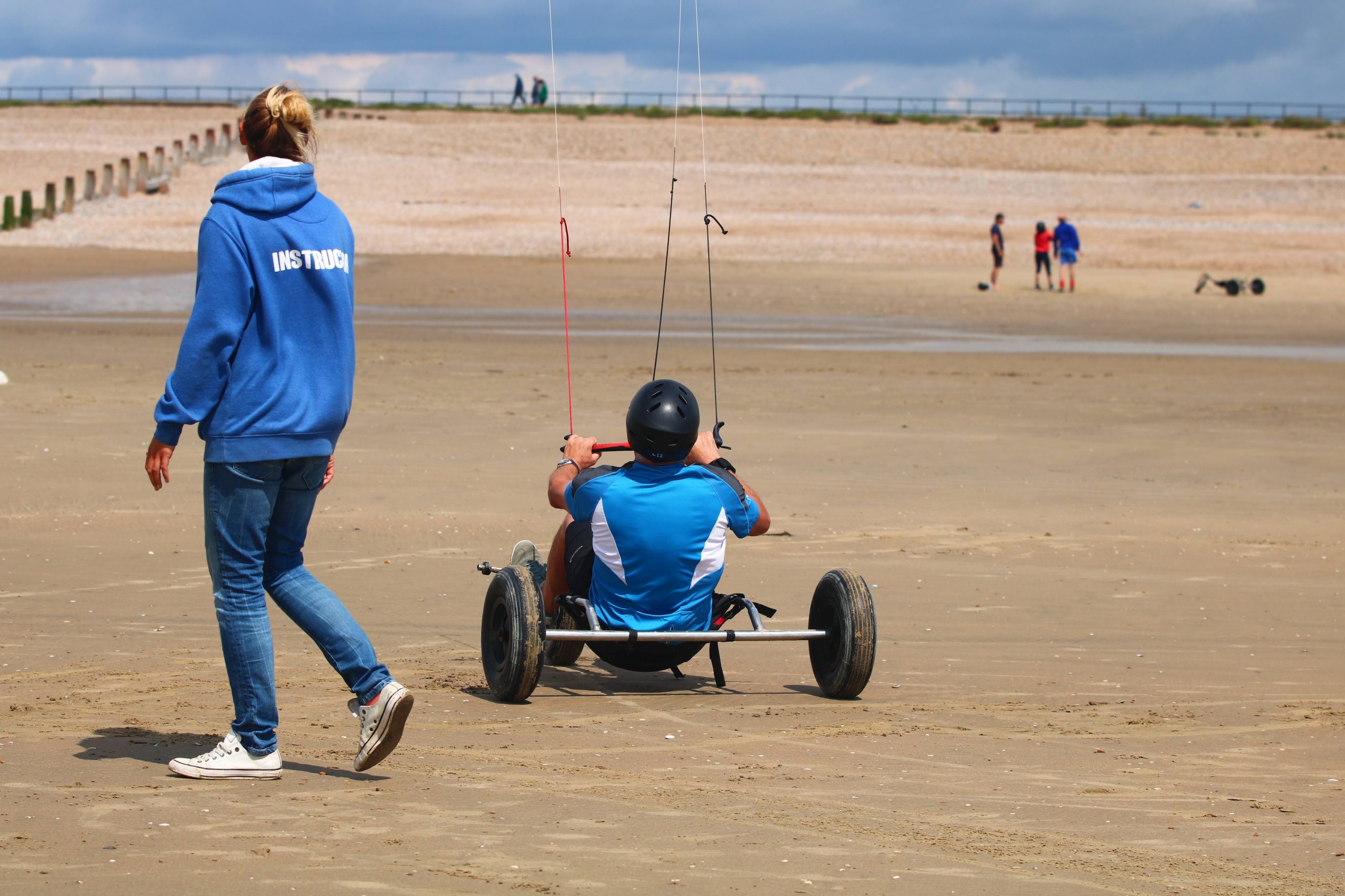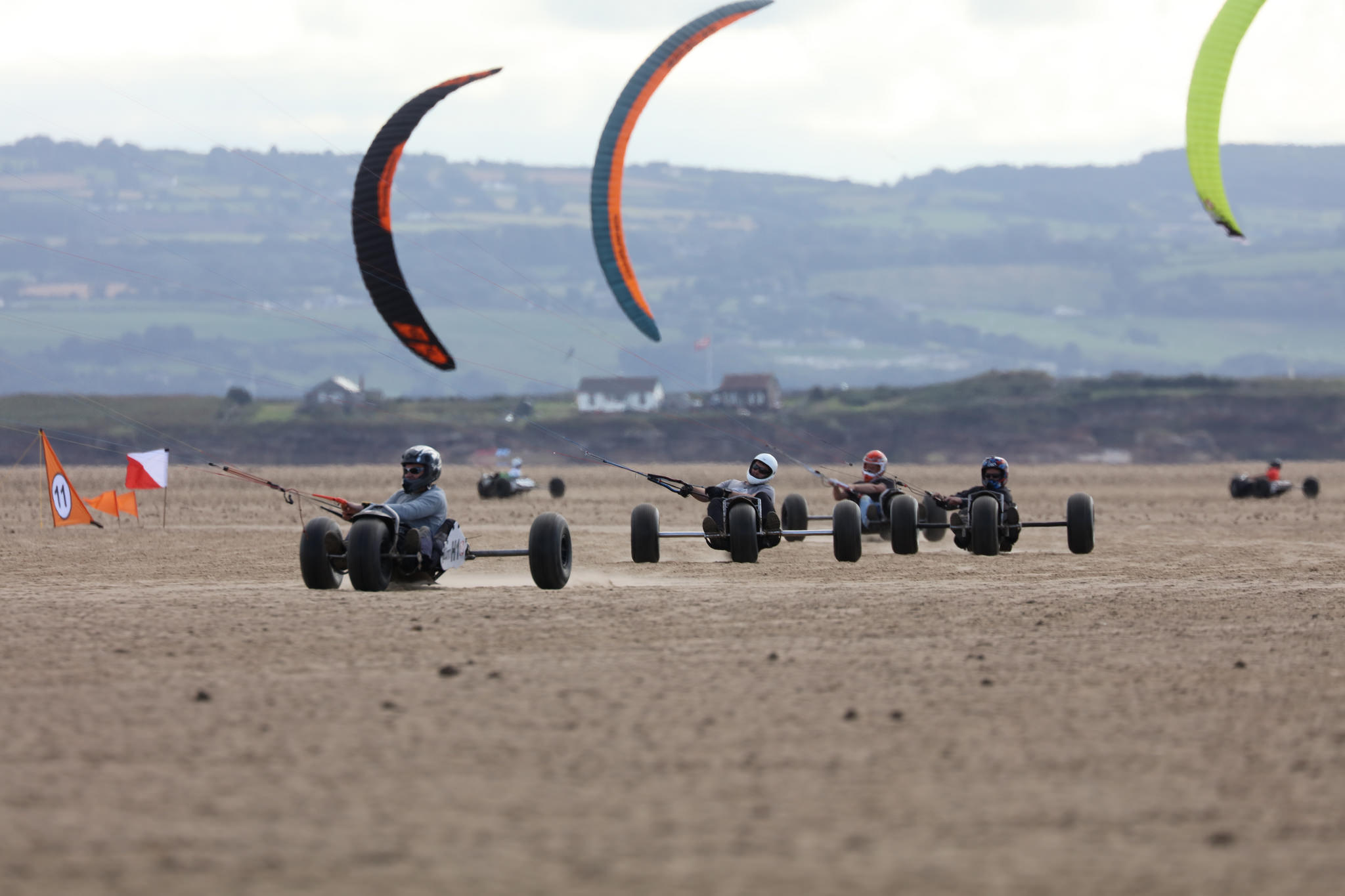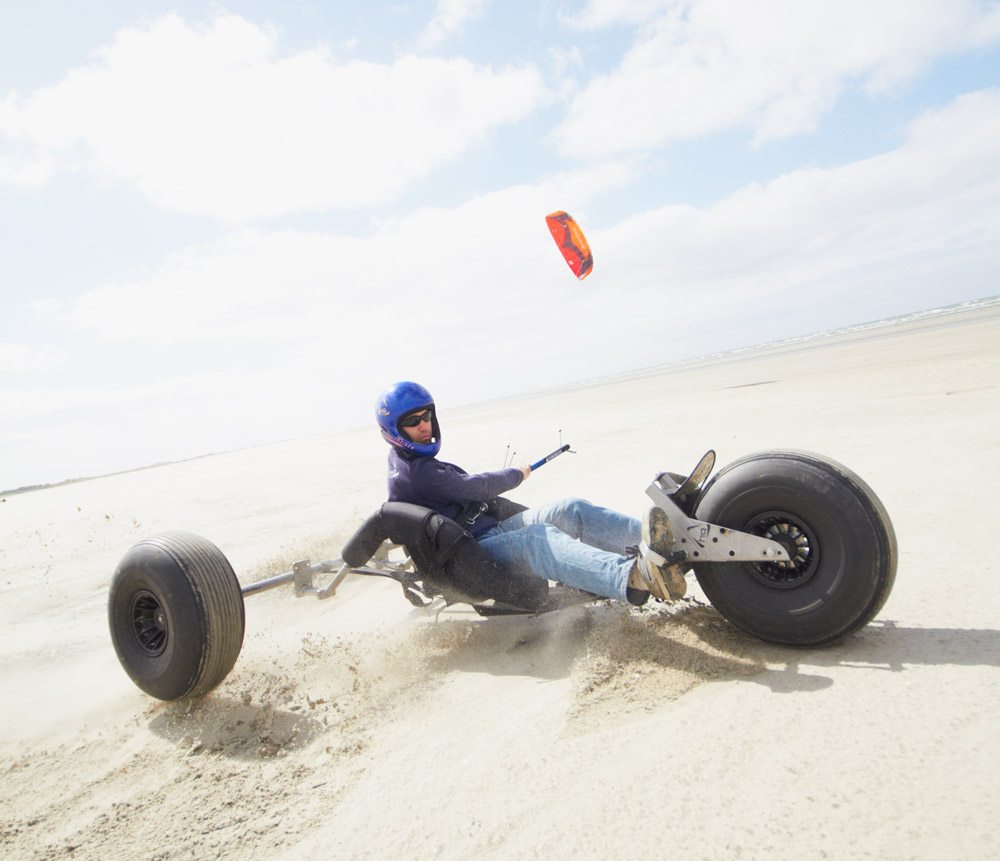Kite Buggying
Posted by Maclano on

Have you ever felt exhilarated and free when participating in extreme sports? If not, kite buggying is a thrilling adventure activity that can provide an exciting new way to experience the outdoors. Kite buggying combines the practice of Kite flying with riding all-terrain vehicles over dunes, open fields, or paved surfaces. This adrenaline-filled outdoor adventure offers an environment full of challenges and opportunities for fun – no matter your skill level!
What is kite buggying, and how does it work?
Kite bugging is a recreational activity involving using the wind's power to propel a vehicle while being attached to it with a large kite. Kites are typically constructed from lightweight fabrics such as nylon or rip-stop polyester and can reach speeds over 40 mph. Kite buggying is growing in popularity due to its simplicity and the potential for adrenaline-filled fun.
The benefits of kite buggying

Kite buggying is an exciting way to get around. It harnesses the power of wind and kites to travel across land or water surfaces at impressive speeds. Kite buggying has many benefits, including cost-effectiveness, sustainability, and fun!
Cost-effectiveness: Kite buggying is an affordable form of transport. Kites are relatively inexpensive and don't require a lot of maintenance. Additionally, fuel costs can be avoided as kite buggying uses the wind as its main energy source.
Sustainability: Kite buggying is considered environmentally friendly because it does not produce emissions or noise pollution. Kites are also made from durable materials that can be reused and recycled.
Fun: Kite buggying is great fun! It's a thrilling way to get around and gives you an adrenaline rush like no other. Kite buggy allows you to explore new places and take in beautiful scenery from a unique perspective.
How to get started with kite buggying?

Kite buggying is an exciting, action-packed sport that can be enjoyed by land and water. Kite buggying involves riding a powered kite over large open fields or the ocean using a specially designed buggy with wheels. Kite buggying is challenging and rewarding as it requires skill, strength, strategy, and coordination.
To start kite buggying, you need to be familiar with the basics. You should take a few lessons from an experienced instructor before attempting this sport on your own. You should also ensure you have all the necessary safety gear, such as a helmet and protective clothing.
The best places to go kite buggying in the world

1) West Coast Kite Park in British Columbia, Canada: The West Coast Kite Park is one of the most popular kite buggying spots in the world, with rolling hills and a wide-open landscape. Kite buggies can take advantage of the park's large meadows, varied terrain, and stunning views of the surrounding mountains.
2) Kite Beach in Maui, Hawaii: Kite beach is one of the world's most well-known Kite buggying destinations. Kiting enthusiasts can experience exhilarating rides along the Hawaiian coastline and stunning views of Kite Beach's white dunes.
3) Great Ocean Road, Australia: This iconic coastal road stretches for over 150 miles along the southeastern coast of Australia, offering some of the best kite buggying conditions in the world. Kite buggies can look forward to taking on challenging terrain and spectacular views of cliffs, beaches, and forests.
4) Kitesurfing Paradise in Cabarete, Dominican Republic: Kitesurfing Paradise is one of the most popular kite buggying spots in the Caribbean. Kiting enthusiasts can experience thrilling rides along the Dominican Republic's tropical coastline, warm waters, and spectacular beaches.
Kite buggy equipment - what do you need to get started?

- Kite: Kite buggy needs a power kite. Kites are available in various sizes, shapes, and colors to suit your needs. Kites are made from fabric and require a bar, lines, harness, and safety systems for control.
- Kite buggy: Kite buggies come in different shapes and sizes, but all typically have large wheels for stability on uneven terrain. Kite buggies usually have four or more wheels, a seat, and handlebars.
- Kite Lines: Kite lines connect the Kite to the buggy, providing power for the vehicle. Kite lines are typically made of strong nylon material in lengths of 30 to 50 meters (100 to 160 feet).
- Kite Harness: A Kite harness is a secured belt worn by the Kite Buggier that attaches them to the buggy. Kite harnesses provide a secure connection between the Kite Buggier and the Kite, allowing for better control of the Kite Buggy.
- Safety System: A Kite safety system is designed to keep Kite buggies safe in an emergency. Kite safety systems typically include a quick release for the Kite buggy and Kite lines and other equipment such as helmets and body armor.
Safety tips for kite buggying

1) Learn the basics: Kite buggying can be dangerous if you don't know the basics. Before Kite buggying, it is important to learn how to set up and control your Kite buggy and the Kite itself.
2) Wear protective gear: Kite buggies should always wear a Kite harness and helmet for safety. It is also important to wear appropriate clothing (such as long pants and a jacket) to ensure extra protection from the elements.
3) Kite in safe areas: Kite buggies should avoid Kite bugging in populated or congested areas and be aware of other activities, such as swimming and fishing. Kite buggying is best done in open areas away from others.
4) Kite with a partner: Kiting should always be done with at least one other person to help keep an eye on Kite buggies and provide assistance if needed. Kitesurfers should never Kite alone.
How to make a kite buggy?

The first step in making a kite buggy is to decide on your design. Kite buggies come in many shapes and sizes, so choosing one that fits your needs and preferences is important. Kites can be used with any wheeled vehicle, including mountain boards, roller skates, and ski bikes.
Once you have decided on the design for your kite buggy, it is time to assemble the materials. Kite buggies are typically made with lightweight materials such as PVC pipe, wood, and plastic that can be found in hardware stores or online.
Kites can also vary in size and shape, so choosing one that works best for your needs is important.
The next step is to attach the Kite to the vehicle. Kite buggies can be powered by either wind or motor, depending on the terrain you are exploring.
Kites should be securely tied to the buggy and connected to a harness so the rider can control it.
FAQs
How does a Kite buggy work?
Kite buggies are propelled by the wind, which is harnessed through a kite and attached to the buggy. Kites come in various shapes and sizes, each designed to capture different amounts of wind depending on their size and shape. Kites can be adjusted for speed and control depending on how much force is applied to them by the rider.
When the Kite is flying, it creates lift by forming an airfoil shape. This lift allows the buggy to move forward, propelled by the wind. Kites can reach up to 50 miles per hour and power a vehicle over various terrains, upwind point, such as dunes, hills, or snow.
How do I launch my kite buggy?
First, you will need to position yourself in a wide open area with plenty of space for your Kite to lift off safely. To launch your Kite Buggy, two fixed rear wheels, exciting sport, fixed rear wheels, attach the Kite lines to the Kite Bar and then lay out the Kite with its back onto the wind. Make sure that all of your Kite lines are untangled before launching.
Next, hold onto the Kite while pulling on both handles of the Kite Bar to create tension between the Kite lines. This will help keep your Kite steady when running across the field and launching your Kite Buggy into the air. When you feel comfortable, pull harder on both Kite lines and start running with Kite in hand toward the wind. As you gain momentum, point the Kite toward the sky and continue running until you feel a strong lift. Your Kite Buggy is now ready to take off!
How do I control my kite buggy?
Kite buggying is an exhilarating experience, and part of the fun is controlling your buggy. Kite buggies are usually controlled using a hand-held control bar system. This allows you to pull on one side of the bar to turn right or left, wider rear axle, small kite, kite overhead, flying kites, while pushing the other side will cause your buggy to accelerate. You can also use the same system to control the speed of your buggy, as well as to stop it.
Kite buggying is all about balance and coordination, so it's important to practice controlling your kite buggy before you head out on the beach. It's also important to ensure that you are familiar with local laws, wind speed, and regulations regarding kite buggying, power kites, as some areas have specific rules about where you can and cannot ride.
Where can I go kite buggying?
Kite bugging is a popular activity all over the world, and there are plenty of spots that make for great kite buggy rides. You can find beaches, dunes, wind window, fields, and open spaces almost anywhere, but some areas are better suited for kite buggying.
In the United States, you can usually find beaches along the Atlantic and Pacific coasts and some of the Great Lakes areas. Beaches with large dunes are ideal for kite buggying, but you can also find good spots in open fields, barrow wheels or other flat terrain.
If you're looking to head overseas, Europe has plenty of beaches perfect for kite buggying. The Netherlands, Germany, Denmark, and France have great beach spots for kite buggying.
Conclusion:
Kite buggying is an exhilarating sport that anyone can enjoy. With the right equipment and safety precautions, you can buggy with confidence, knowing you're in for a good time. Whether you're a beginner or a seasoned pro, kite buggying is a great way to get outside and have some fun. So what are you waiting for? Get out there and give it a try!



